wikiHow is a “wiki,” similar to Wikipedia, which means that many of our articles are co-written by multiple authors. To create this article, 24 people, some anonymous, worked to edit and improve it over time.
There are 16 references cited in this article, which can be found at the bottom of the page.
wikiHow marks an article as reader-approved once it receives enough positive feedback. In this case, 86% of readers who voted found the article helpful, earning it our reader-approved status.
This article has been viewed 281,942 times.
Learn more...
Ganglion cysts are round, squishy bumps under the skin that generally form along tendons or at joints — most commonly on the wrist.[1] They might be tiny, or they may be an inch in diameter. Although they’re often painless, ganglion cysts can interfere with joint movement, or cause pain by pressing on nearby nerves. In many cases, ganglion cysts will resolve on their own, but there are steps you can take to deal with them when they appear.
Steps
Coping with a Ganglion
-
1Be patient. About 35% of ganglion cysts don’t cause any pain — the only problem with them is that you might find them ugly.[2] Luckily, about 38-58% of ganglion cysts actually go away on their own.[3] If your ganglion isn’t causing you any real trouble, you might just leave it as is and see if the situation resolves on its own.
-
2Take anti-inflammatory painkillers. There are many products available over-the-counter that can help reduce swelling. The reduced swelling will ease pain temporarily, until the medication wears off and the swelling returns. However, because many ganglion cysts resolve on their own, managing pain in the short term is often a good way to wait it out. The three most common types of anti-inflammatory drugs available in pharmacies are:[4]
- Ibuprofen (Advil, Motrin)
- Naproxen sodium (Aleve)
- Aspirin (Ascriptin, Bayer, Ecotrin)
Advertisement -
3Apply ice. If you're feeling pain from your ganglion cyst, try applying cold to it. You can buy a gel pack from a pharmacy, or simply wrap some ice or a pack of frozen vegetables in a towel. Apply it directly to the area where you're feeling pain for 20 minutes at a time. Do this at least every day, up to once every three hours.[5]
-
4Don’t use the affected joint as much. Although the exact cause of ganglion cysts is still unknown, a leading theory suggests that they result from trauma to the joint (like a hard knock or crushing force). Another theory argues that they form when a joint is overused. In either case, limiting joint movement is known to relieve pain and speed up the healing process. Let the affected limb rest as much as possible.[6]
-
5Stabilize the joint with a splint if necessary. You might find it hard to remember that you’re resting your joint, especially if the cyst is on the wrist. While it’s easy to remember to stay off your feet, remembering to stop talking with your hands can be harder! In that case, you might consider applying a splint to the joint. It will both serve as a physical reminder to rest the joint and limit the joint’s movement when you use the limb.[7]
- Place a rigid object (like a piece of wood) along the joint you want to stabilize. You can also wrap the joint in something like a magazine or thick padding of towel or clothing.
- The splint should extend beyond the joint in both directions, so movement is as limited as possible. For example, a wrist splint should extend from the forearm, past the wrist, and down to the hand.[8]
- Tie the splint into place with whatever you have on hand — a necktie, tape, a belt, etc.
- Don’t tie the splint too tightly — you shouldn’t be cutting off blood flow. If your hands or feet start to tingle, loosen your splint.
-
6Massage the cyst. A ganglion is essentially a balloon of liquid, and when it presses up against a nerve, it can cause pain. To encourage the cyst to drain its liquid naturally, doctors often suggest massaging the area. You don’t need to use any particular technique or seek professional massage therapy, though. Simply rub the ganglion gently, but frequently throughout the day. Over time, you should see an improvement in symptoms.[9]
-
7Do not smash the ganglion with a book. Ganglion cysts are sometimes called “Bible bumps” because people try to get rid of them by smashing them with a heavy book — like the Bible. While smashing the ganglion can temporarily get rid of it, there’s a 22-64% chance that the cyst will return if you use this method. Furthermore, you can cause even more damage to the already damaged tissue around the ganglion, or even break a bone if you smash the book with too much force.[10]
Seeking Professional Treatments
-
1Have a doctor drain the cyst. If your ganglion is very painful or is interfering with the natural movement of your wrist, you may need to seek expert treatment to resolve the issue. A medical professional will be able to aspirate, or drain, the cyst, getting rid of the bump under your skin and stopping the cyst from rubbing painfully against nerve tissue.[11]
- Your doctor may check the cyst by shining a light through the growth – if the light shines through, then your doctor knows it is fluid-filled and is a ganglion cyst.
-
2Be prepared for aspiration. Though it’s not a complex procedure, you should know what’s going to happen to you when you arrive for your aspiration. This will help you stay calm and relaxed during the appointment.[12]
- The doctor will apply a topical anesthetic to numb the area around the ganglion.
- He or she might inject the cyst with an enzyme that makes the jelly-like liquid easier to remove.
- The doctor will poke a needle into the cyst, then draw the liquid out from it. The liquid is biological waste that the staff will dispose of lawfully and safely.
-
3Ask if the doctor recommends a steroid injection. Aspiration alone is usually not a permanent treatment; in one study, 59% of cysts treated with aspiration alone came back within three months.[13] However, administering steroids to the site of the drained cyst has proven far more successful, with 95% of cysts still cleared 6 months after treatment.[14]
-
4Discuss surgical options with your doctor. Ganglions have a very high rate of recurrence, so you may find that home treatment and even aspiration is not a lasting solution to your problem. If you have a persistent ganglion that keeps coming back, ask your doctor about the possibility of having the cyst removed surgically.[15]
- This is typically an outpatient procedure, in which the doctor administers anesthesia through an IV.
- Rather than simply draining the liquid from the cyst, they will remove the entire cyst, as well as the stalk that attaches it to the tendon or joint. Through complete removal, you reduce the chances of another cyst growing back.
-
5Know the risks of surgical removal. As with any surgery, there is a chance of something going wrong during the procedure. In rare cases, surgery might damage the nerve tissue, blood vessels, or tendons in the area around the cyst. You may also suffer from an infection or excessive bleeding.[16]
-
6Take care of yourself after the surgery. The area surrounding the cyst site will be sore and possibly painful during the healing process. Ask the doctor to prescribe a painkiller, like Vicodin, to help you manage the pain until it fades. Rest the affected limb as much as possible for at least a few days. For example, if the cyst was on your wrist, avoid activities like typing and cooking for a while. Ask your doctor for a recovery plan that includes:[17]
- An estimate of how long it will take to recover.
- What specific activities to avoid during the recovery process.
- What symptoms to look for that might indicate problems with the procedure.
Expert Q&A
Did you know you can get expert answers for this article?
Unlock expert answers by supporting wikiHow
-
QuestionI have pierced my ganglion with a needle sterilized in boiling hot water. This has reduced the swelling to half. Is it safe to do this?
 Chris M. Matsko, MDDr. Chris M. Matsko is a retired physician based in Pittsburgh, Pennsylvania. With over 25 years of medical research experience, Dr. Matsko was awarded the Pittsburgh Cornell University Leadership Award for Excellence. He holds a BS in Nutritional Science from Cornell University and an MD from the Temple University School of Medicine in 2007. Dr. Matsko earned a Research Writing Certification from the American Medical Writers Association (AMWA) in 2016 and a Medical Writing & Editing Certification from the University of Chicago in 2017.
Chris M. Matsko, MDDr. Chris M. Matsko is a retired physician based in Pittsburgh, Pennsylvania. With over 25 years of medical research experience, Dr. Matsko was awarded the Pittsburgh Cornell University Leadership Award for Excellence. He holds a BS in Nutritional Science from Cornell University and an MD from the Temple University School of Medicine in 2007. Dr. Matsko earned a Research Writing Certification from the American Medical Writers Association (AMWA) in 2016 and a Medical Writing & Editing Certification from the University of Chicago in 2017.
Family Medicine Physician
-
QuestionI had a ganglion cyst removed from my leg, just below the knee. It came back before my incision was healed. It's been months and my lower leg keeps going numb. Sick of going to the doctor's and a steroid shot has done nothing. What now? I am on my feet walking all day at work.
 Chris M. Matsko, MDDr. Chris M. Matsko is a retired physician based in Pittsburgh, Pennsylvania. With over 25 years of medical research experience, Dr. Matsko was awarded the Pittsburgh Cornell University Leadership Award for Excellence. He holds a BS in Nutritional Science from Cornell University and an MD from the Temple University School of Medicine in 2007. Dr. Matsko earned a Research Writing Certification from the American Medical Writers Association (AMWA) in 2016 and a Medical Writing & Editing Certification from the University of Chicago in 2017.
Chris M. Matsko, MDDr. Chris M. Matsko is a retired physician based in Pittsburgh, Pennsylvania. With over 25 years of medical research experience, Dr. Matsko was awarded the Pittsburgh Cornell University Leadership Award for Excellence. He holds a BS in Nutritional Science from Cornell University and an MD from the Temple University School of Medicine in 2007. Dr. Matsko earned a Research Writing Certification from the American Medical Writers Association (AMWA) in 2016 and a Medical Writing & Editing Certification from the University of Chicago in 2017.
Family Medicine Physician
Warnings
- Do not try the old-fashioned "Bible" method to remove the cyst. In the old days a heavy book, usually the family Bible, was used to smash the ganglion cyst. This type of cyst was often called the Bible cyst (or "Bible Bumps") for this reason. The cyst will probably come right back, and you might damage surrounding tissue in the process.⧼thumbs_response⧽
References
- ↑ https://orthoinfo.aaos.org/en/diseases--conditions/ganglion-cyst-of-the-wrist-and-hand/
- ↑ https://www.ashfordstpeters.info/images/leaflets/HN13.pdf
- ↑ https://www.hindawi.com/journals/isrn/2013/940615/
- ↑ https://www.assh.org/handcare/condition/ganglion-cyst
- ↑ https://kidshealth.org/en/parents/ganglion-cysts.html
- ↑ https://my.clevelandclinic.org/health/diseases/15554-ganglion-cysts#management-and-treatment
- ↑ https://orthoinfo.aaos.org/en/diseases--conditions/ganglion-cyst-of-the-wrist-and-hand/
- ↑ http://www.nlm.nih.gov/medlineplus/ency/article/000040.htm
- ↑ https://www.orthobethesda.com/blog/what-to-do-when-a-ganglion-cyst-ruptures/
- ↑ https://myhealth.alberta.ca/Health/aftercareinformation/pages/conditions.aspx?hwid=uf8877
- ↑ https://my.clevelandclinic.org/health/diseases/15554-ganglion-cysts
- ↑ https://orthoinfo.aaos.org/en/diseases--conditions/ganglion-cyst-of-the-wrist-and-hand
- ↑ https://www.ncbi.nlm.nih.gov/pmc/articles/PMC6443391/
- ↑ https://www.ncbi.nlm.nih.gov/pmc/articles/PMC4045351/
- ↑ https://www.nhs.uk/conditions/ganglion/
- ↑ https://myhealth.alberta.ca/Health/aftercareinformation/pages/conditions.aspx?hwid=ace3534
- ↑ https://myhealth.alberta.ca/Health/aftercareinformation/pages/conditions.aspx?hwid=ace3534#ace3548
About This Article
One way to cope with having a ganglion cyst is by taking anti-inflammatory painkillers like Ibuprofen or Naproxen sodium to reduce swelling and pain. You can also apply an ice pack to the ganglion cyst or massage the area to get rid of swelling. If the ganglion cyst is causing you a lot of pain, go to the doctor to see if they recommend draining it. Additionally, if your ganglion cyst is recurring, you should ask your doctor if a steroid injection or surgical removal could help. To learn how to stabilize your joint to cope with a ganglion cyst in your wrist, read more from our Physician co-author.
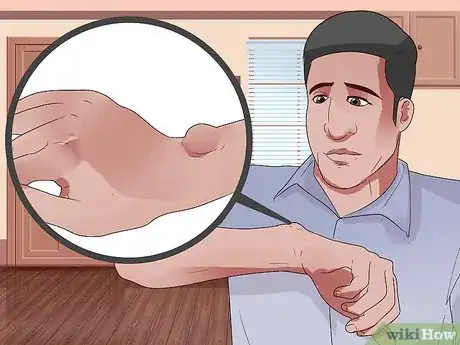
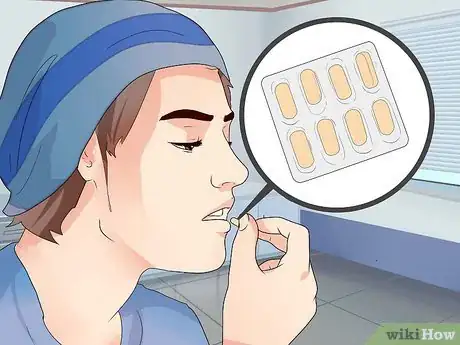

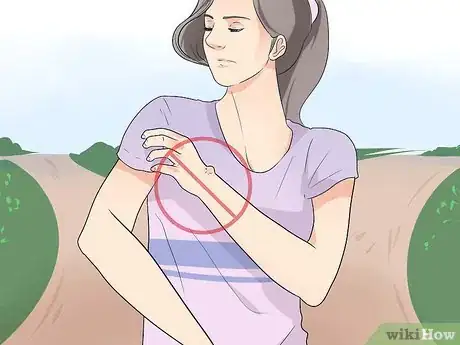


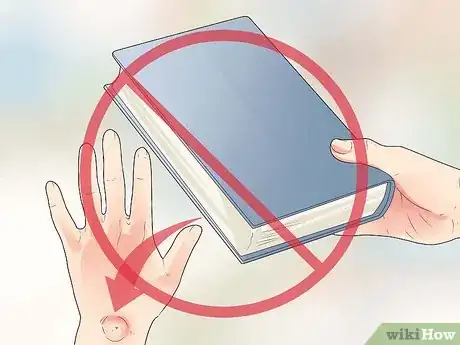
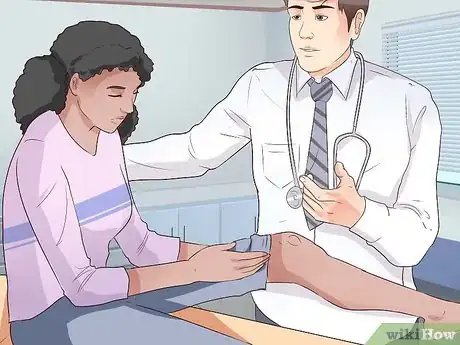

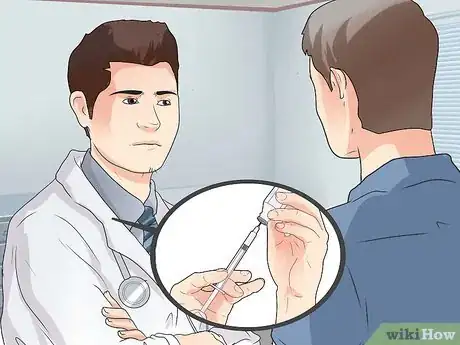

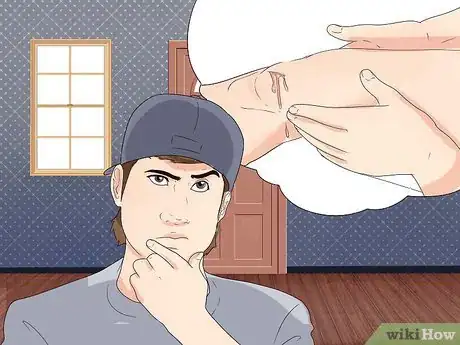

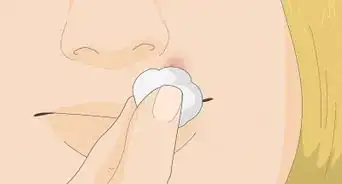


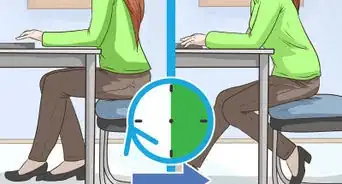

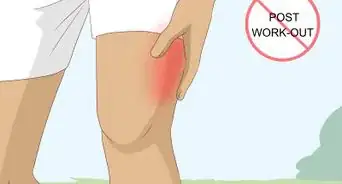
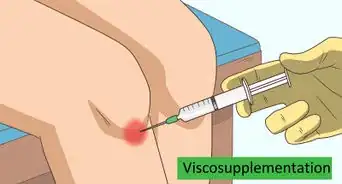

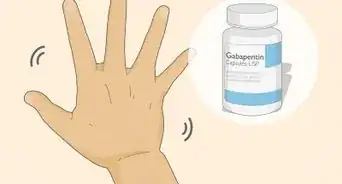
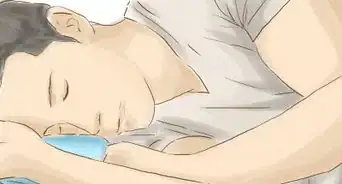

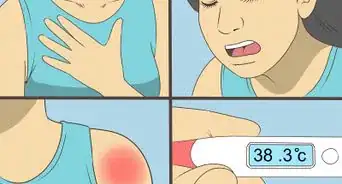












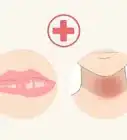
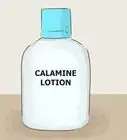
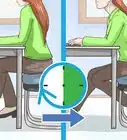




































Medical Disclaimer
The content of this article is not intended to be a substitute for professional medical advice, examination, diagnosis, or treatment. You should always contact your doctor or other qualified healthcare professional before starting, changing, or stopping any kind of health treatment.
Read More...